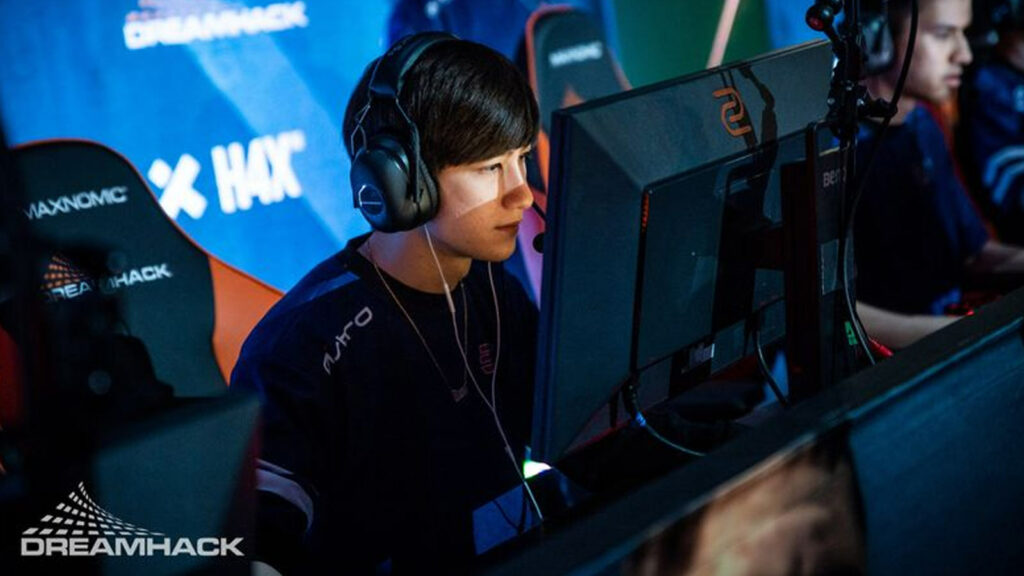August 3, 2024
The evolution of esports has been a fascinating journey, marked by numerous milestones that have propelled it from a niche hobby to a global spectacle. The industry’s growth has been fueled by significant events that have redefined competitive gaming.
Gaming has transformed from a niche hobby to a global esports phenomenon. In the early days, gamers played for fun, competing in local tournaments and online forums. As technology improved and internet connectivity increased, competitive gaming grew, with pioneers like StarCraft and Counter-Strike leading the charge. Today, esports boasts sold-out arenas, million-dollar prizes, and professional teams, cementing its place as a mainstream sport.
And all of this didn’t happen overnight. Here are the top 5 moments that brought esports to where it is in 2024.
The 1997 Red Annihilation tournament

In 1997, the Red Annihilation tournament for Quake marked a pivotal moment in esports history. With over 2,000 participants competing online and the finals held at the Electronic Entertainment Expo (E3) in Atlanta, this event is often considered the first major esports tournament.
The grand prize—a Ferrari owned by Quake’s co-creator, John Carmack—added to the event’s allure and legitimacy. This tournament showcased the potential of competitive gaming and set the stage for the professionalization of eSports, laying the groundwork for future tournaments and leagues.
Twitch launches in 2011
The launch of Twitch in 2011 revolutionized the esports industry by providing a dedicated platform for gamers to stream their gameplay live. This development allowed esports to reach a global audience, turning what was once a niche hobby into a mainstream entertainment medium.
Twitch’s influence extends beyond viewership; it has enabled gamers to build personal brands, connect with their audience, and monetize their content through subscriptions and donations. The platform’s success has attracted significant investments, partnerships, and even mainstream media attention, further legitimizing eSports as a formidable industry.
The League of Legends World Championships 2013
The 2013 League of Legends World Championships represented a watershed moment for esports, highlighting its growing popularity and acceptance. Held at the Staples Center in Los Angeles, the event sold out in under an hour and attracted over 32 million viewers online.
The scale and success of this event demonstrated the massive appeal of esports and set new standards for future tournaments. The production quality, prize pool, and global reach of the 2013 World Championships showcased the potential of esports as a spectator sport, encouraging more investment and interest from sponsors, media, and fans alike.
Dota 2’s The International: Prize pools reach new heights
Dota 2’s The International has consistently set records for the largest prize pools in esports, thanks mainly to its innovative crowdfunding model. In 2019, The International’s prize pool surpassed $34 million, funded primarily through in-game purchases by the community.
This groundbreaking approach not only demonstrated the financial viability of esports but also highlighted the deep engagement and support from the gaming community. The substantial prize pools have attracted top talent from around the world, raising competition and drawing massive viewership. The success of The International has set a benchmark for prize pools in esports, pushing other tournaments to follow suit.
CSGO redefines esports

Counter-Strike: Global Offensive (CSGO), released in 2012, has become one of the most enduring and influential games in the eSports arena. Its balanced gameplay, strategic depth, and competitive nature have made it a staple in the eSports community. Major tournaments such as ESL One Cologne, the Intel Extreme Masters, and the prestigious Major Championships sponsored by Valve have cemented CS’s place in eSports history. These events draw massive online and in-person audiences and feature substantial prize pools, showcasing the game’s enduring appeal. The community-driven nature of CS, combined with its high skill ceiling, has fostered a thriving competitive scene that continues to grow.
The continued evolution of streaming platforms, virtual reality advancements, and augmented reality integration are just a few examples of how esports is poised to evolve. The potential for larger audiences, more substantial prize pools, and greater mainstream acceptance suggests that esports will continue to thrive and expand, offering new opportunities for players, fans, and stakeholders.